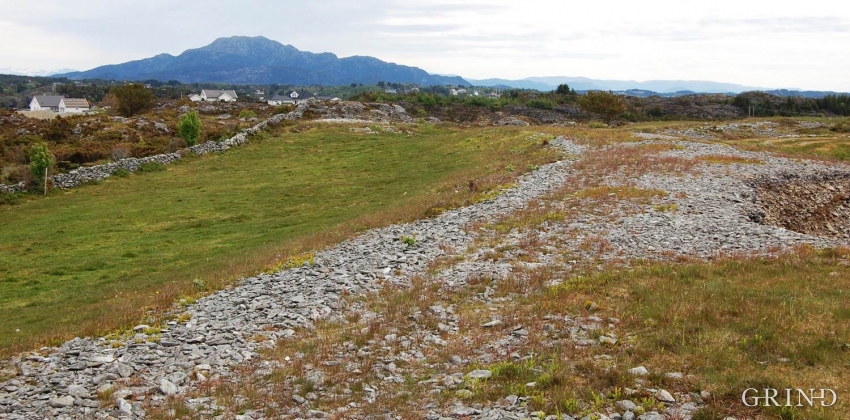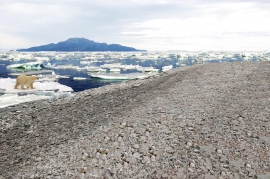Published: 21.07.2015 | Author: John-Inge Svendsen
Strandvollen ved Hallaråker. Siggjo in the background (John-Inge Svendsen).
RAISED BEACHES BY HALLARÅKER-SØNSTABØ
The only large-sized raised beach from the end of the last Ice Age in Hordaland is located on the west side of Bømlo. A raised beach is a long mound of pebbles, created by the waves crashing against the land where there are loose seidment deposits along the shore. The way in which raised beaches are formed today can be seen for example at Herdla.
The new road between Hallaråker and Sønstabø crosses the several hundred metre- long discontinuous raised beach that lies about 35 metres above sea level. This indicates the highest sea level on the west side of Bømlo after the Ice Age ended about 12 000 years ago. At that time the sea reached all the way in here, and huge waves and loose sediments also caused the stones to roll back and forth, such that the edges eventually got chipped off and they became rounded. The biggest waves tossed stones up on land to a couple of metres above the high water mark.




